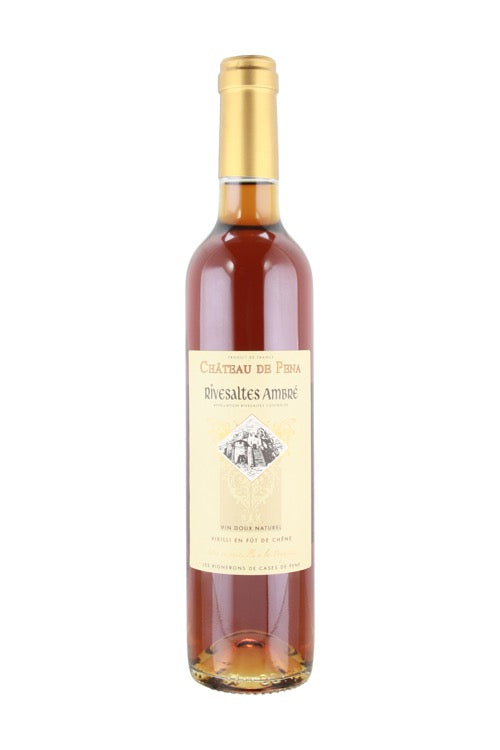1
/
of
1
Chateau de Pena Muscat de Rivesaltes Ambre - NV (500ml)
Chateau de Pena Muscat de Rivesaltes Ambre - NV (500ml)
Regular price
$4.99
Sale price
$4.99
Regular price
$14.99
Unit price
/
per
Amber in color, this Rivesaltes "Ambré" offers a nose of dried apricots, gingerbread, caramel, and roasted coffee, with a light nutty, smoky character.
Winemaker's Notes
Winemaker's Notes
Availability:
24 In Stock
$25 Shipping on Orders +$299
Couldn't load pickup availability
Share :

- varietal
- Region
- Type
- Reviews
Product Review
Amber in color, this Rivesaltes "Ambré" offers a nose of dried apricots, gingerbread, caramel, and roasted coffee, with a light nutty, smoky character.
Muscat was one of the first grapes to be identified and cultivated and is, more accurately speaking, the name given to the family of four main sub-varieties. The most important is Muscat Blanc a Petits Grains and Muscat of Alexandria. Due to the high level of Monoterpenes they are almost unique in producing wines with a distinctively grapey and musky aroma. Muscat Blanc is fast becoming one of the world’s most popular light-skinned varieties making the Moscatel’s of Spain and Moscato’s of Italy. These wines are typically very fragrant and low-alcohol, sweet, sparkling wine. The grape is also grown in France, making bone-dry whites in Alsace and sweet fortified ‘Vins doux naturels’ in the hotter climes in south of the country. In Australia, it is the darker hued Muscat of Alexandria which forms the countries finest liqueur Muscats, delivering unctuous aromas of citrus peel and sweet spice. Good examples come from Barossa and Rutherglen Valley.
The Languedoc and Roussillon are two adjoining but distinctly separate wine regions in southern France. The Languedoc consists of two main regions: The Aude, home to the sub-regions of Limoux, Corbieres, Fitou, Minervois, and the Herault, which includes Picpoul de Pinet and the vin doux naturels producing regions of Banyuls, Frontignan, Lunel and Mireval.
Dessert wines are usually any sweet wine drunk with or around a meal. White fortified wines (fino and amontillado sherry) are usually drunk before the meal, and the red fortified wines (port and madeira) drunk after it. Most fortified wines are regarded as distinct from dessert wines, but some of the less strong fortified white wines, are regarded as honorary dessert wines. In the United States a dessert wine is legally defined as any wine over 14% alcohol by volume, which includes all fortified wines.


